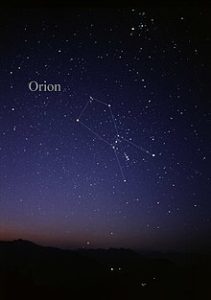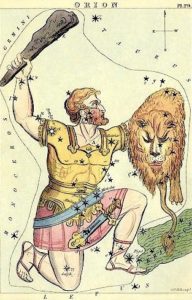Click for 3D Model Viewer
Orion (Mrug)
Orion, resembles the shape of a hunter, when stars in this constellation are imaginarily connected, as per Indian mythology!
Where should I see…Eridanus constellations towards west of Orion constellation. If you move your eyes towards east, you will see another constellation named Monoceros and Gemini. In the North and South of Orion, you will find Taurus and Lepus constellations respectively. Orion is halfway above and halfway below celestial equator.
will see another constellation named Monoceros and Gemini. In the North and South of Orion, you will find Taurus and Lepus constellations respectively. Orion is halfway above and halfway below celestial equator.
It covers up 594 square degree area of the sky. Area wise it is 26th largest constellation in the sky.
When and What can I see…We can gaze at this hunter shape of Orion constellation from August to April, as seen from India.
All you need is your naked eyes other than clear skies to see 222 stars of this constellations, as they are the one which are brighter than the lower limit of our naked eyes (i.e. 6.5 apparent magnitude) to see faintest stars. The brightest star of this constellation is Rigel. The Hindu name of two other stars Meissa and Betelgeuse are Mrigashirsha and Ardra which are also called Nakshatras (the lunar mansion).
Constellations are made up of single, binary (apparent and absolute), multiple and variable stars. Out of total 222 stars of different types, here is the list of 20 brightest stars as per their nature:
| Binary / Multiple Star system | Variable Stars | Binary and Variable Stars | Single stars |
| 4 | Saif | Rigel | 2 |
| – | 2 | Betelgeuse | – |
| – | – | Bellatrix | – |
| – | – | Alnilam | – |
| – | – | Alnitak | – |
| – | – | Mintaka | – |
| – | – | Hatsya | – |
| – | – | Tabit | – |
| – | – | Meissa | – |
| – | – | 2 | – |
| 4 | 3 | 11 | 2 |
As per Hindu mythology, there are no such known stories for this constellation.
Deep Sky Objects…
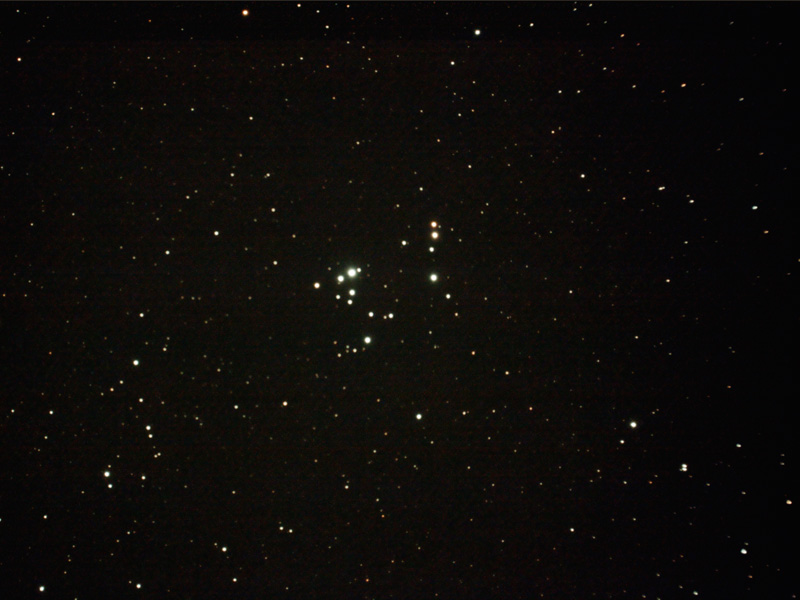 37 Cluster or NGC 2169 || Open Cluster
37 Cluster or NGC 2169 || Open Cluster
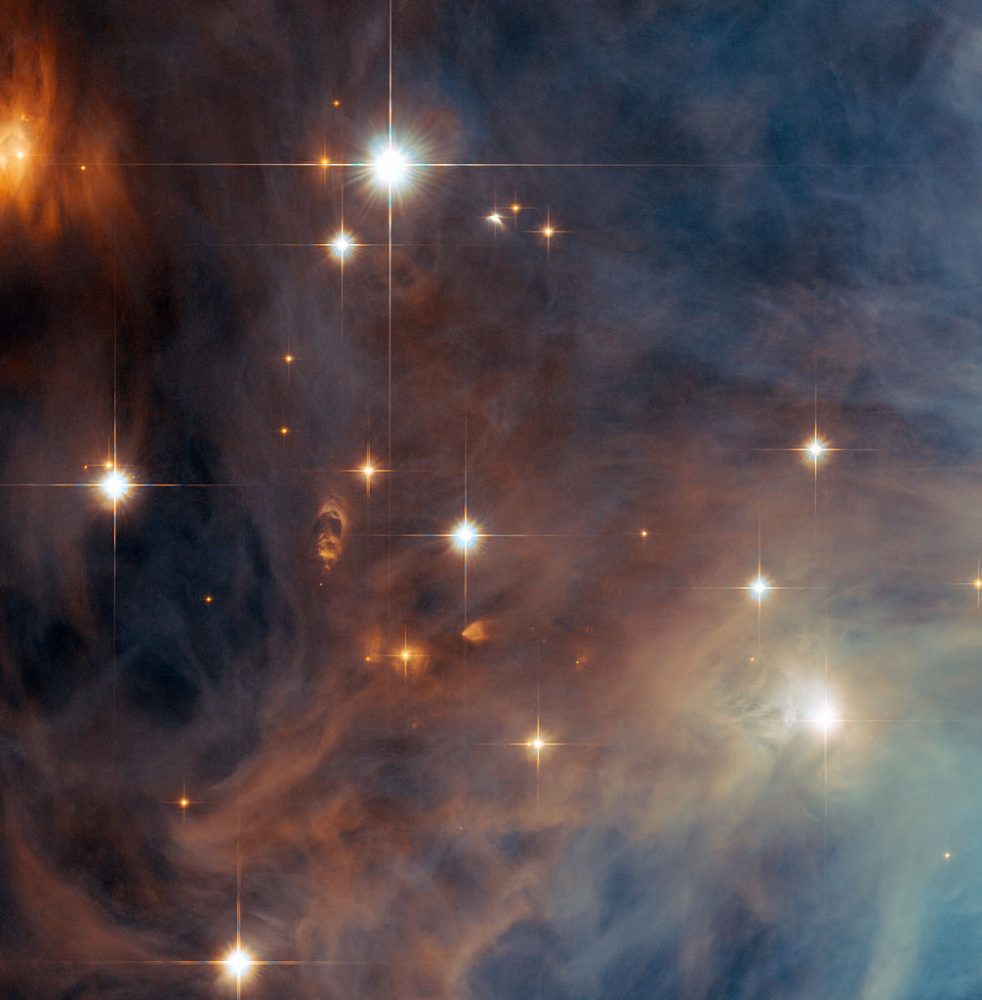 De Mairans Nebula or M43 || Diffuse Nebula
De Mairans Nebula or M43 || Diffuse Nebula
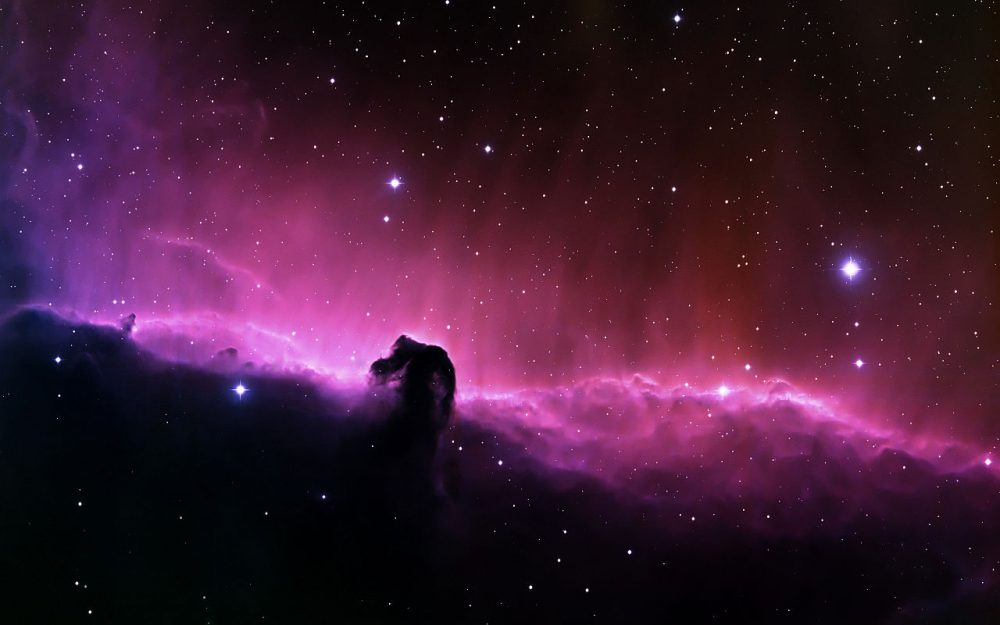 Horsehead Nebula or Barnard 33 || Dark Nebula
Horsehead Nebula or Barnard 33 || Dark NebulaAll the stars that we see naked eyes, all belong to our own, Milky way galaxy (Akash Ganga Tara Vishv). Bright stars can be seen naked eye and faint one through telescope. But the curtain of sky that we see in 2D is actually a huge universe we are talking about, with 3 dimension. There are many nebulous objects visible in every constellations. They differ widely by distances and nature. Like Emission Nebula, Reflecting Nebula, Absorption Nebula, Star Birth Nebula, Supernova Remnants (SNR) and Open Stars cluster which are within the disk of our own Milky Way galaxy. Globular cluster are also found, which are in the halo of our galaxy and some most distant objects like galaxies are also visible through telescope. Such objects are defined as “Deep Sky Objects”.
In this constellation there are 17 such different types of Deep Sky Objects observed. Below is the list of 20 brightest Deep Sky Objects:
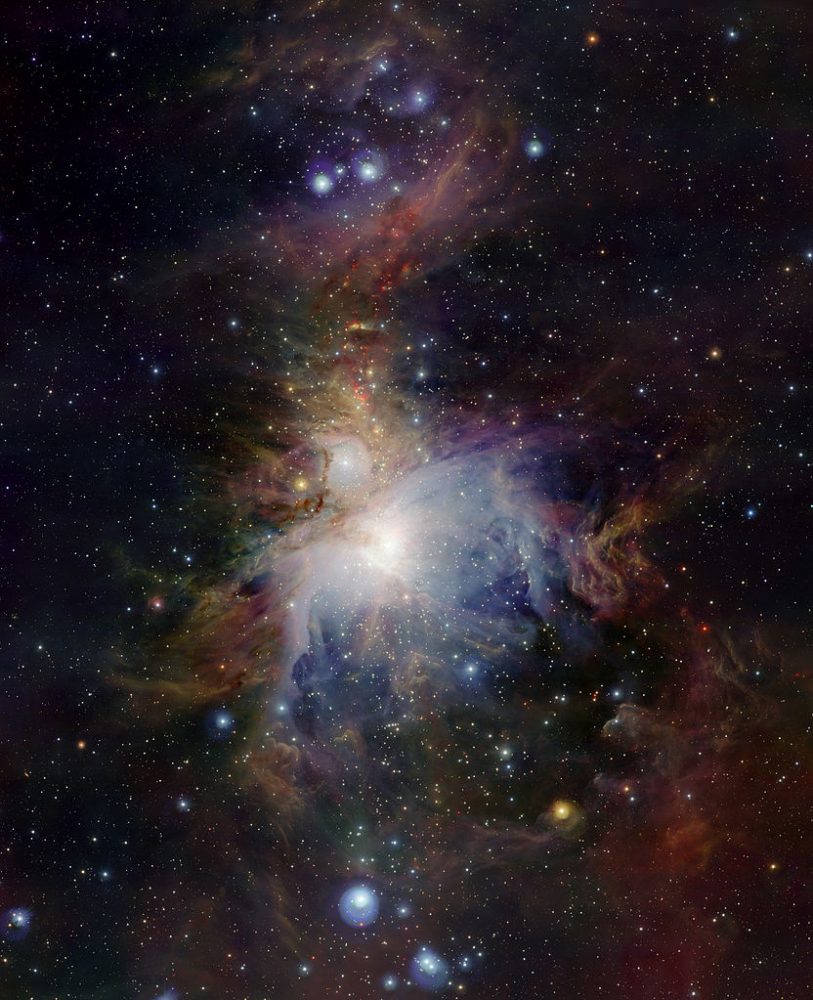 Orion Nebula or M42 || Diffuse Nebula
Orion Nebula or M42 || Diffuse Nebula
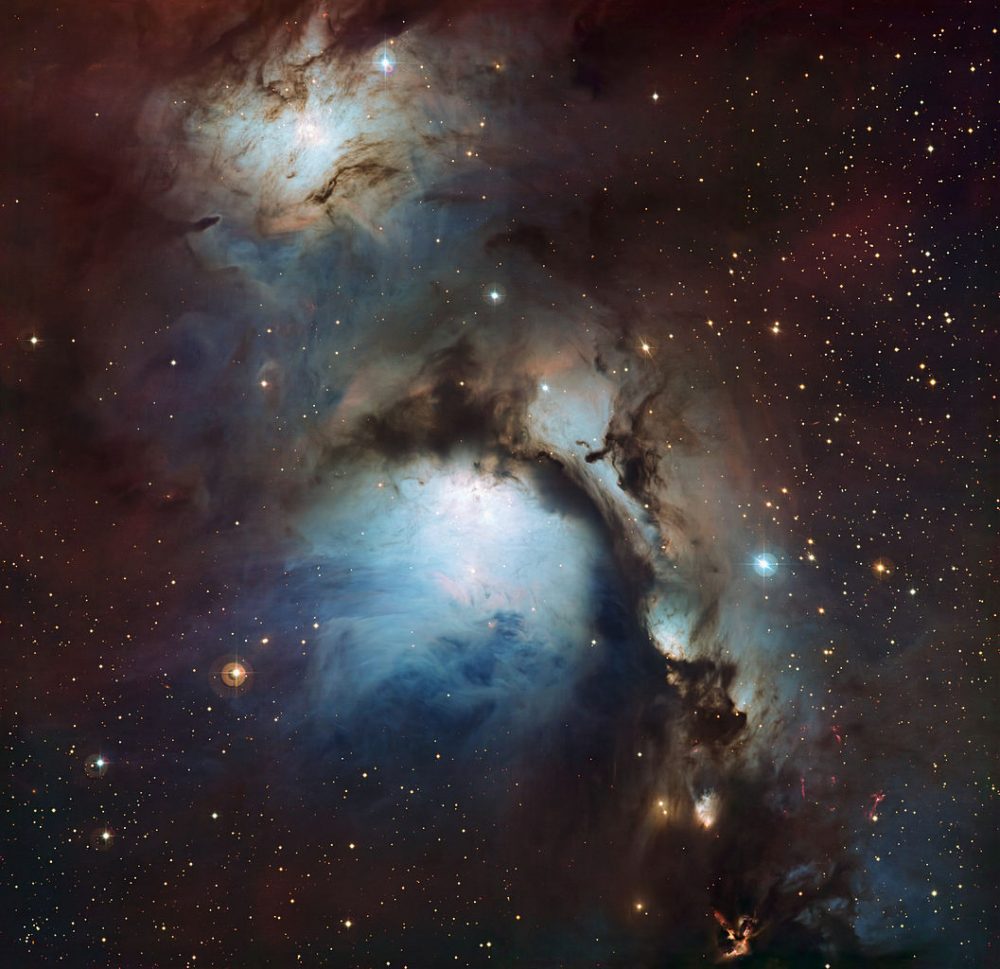 M78 or NGC 2068 || Reflection Nebula
M78 or NGC 2068 || Reflection Nebula
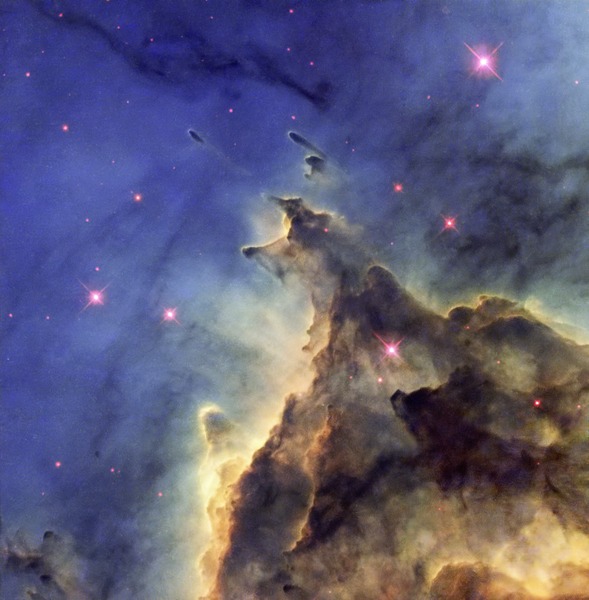 Monkey Head Nebula or NGC 2174 || Emission Nebula
Monkey Head Nebula or NGC 2174 || Emission Nebula
| Visibility | Galaxy | Open Cluster | Globular Cluster | Nebula | Supernova Remanant |
| Naked eyes | M31 – Andromeda Galaxy | 2 | – | – | – |
| Telescope | M 110 | 1 | – | 1 | – |
| M 32 | |||||
| 13 | |||||
| 20 | 16 | 3 | 1 |
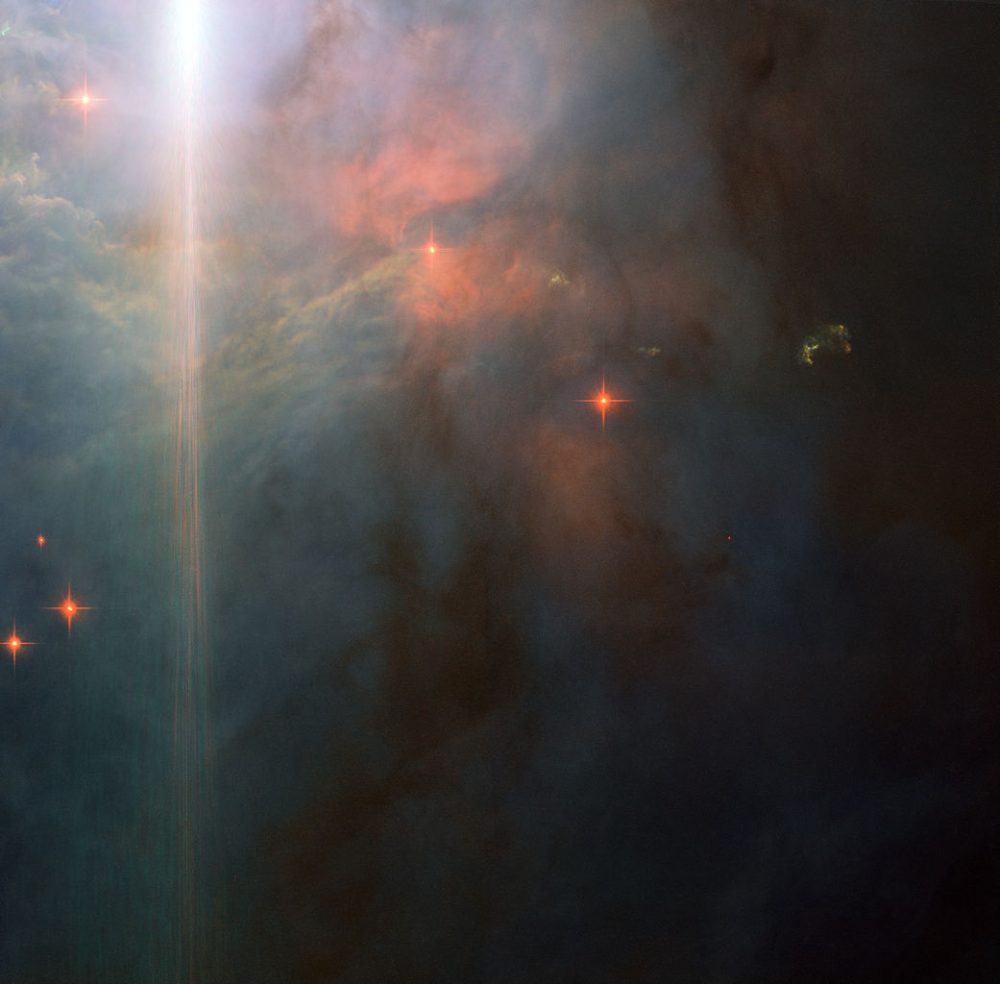 NGC 2023 || Diffuse Nebula
NGC 2023 || Diffuse Nebula
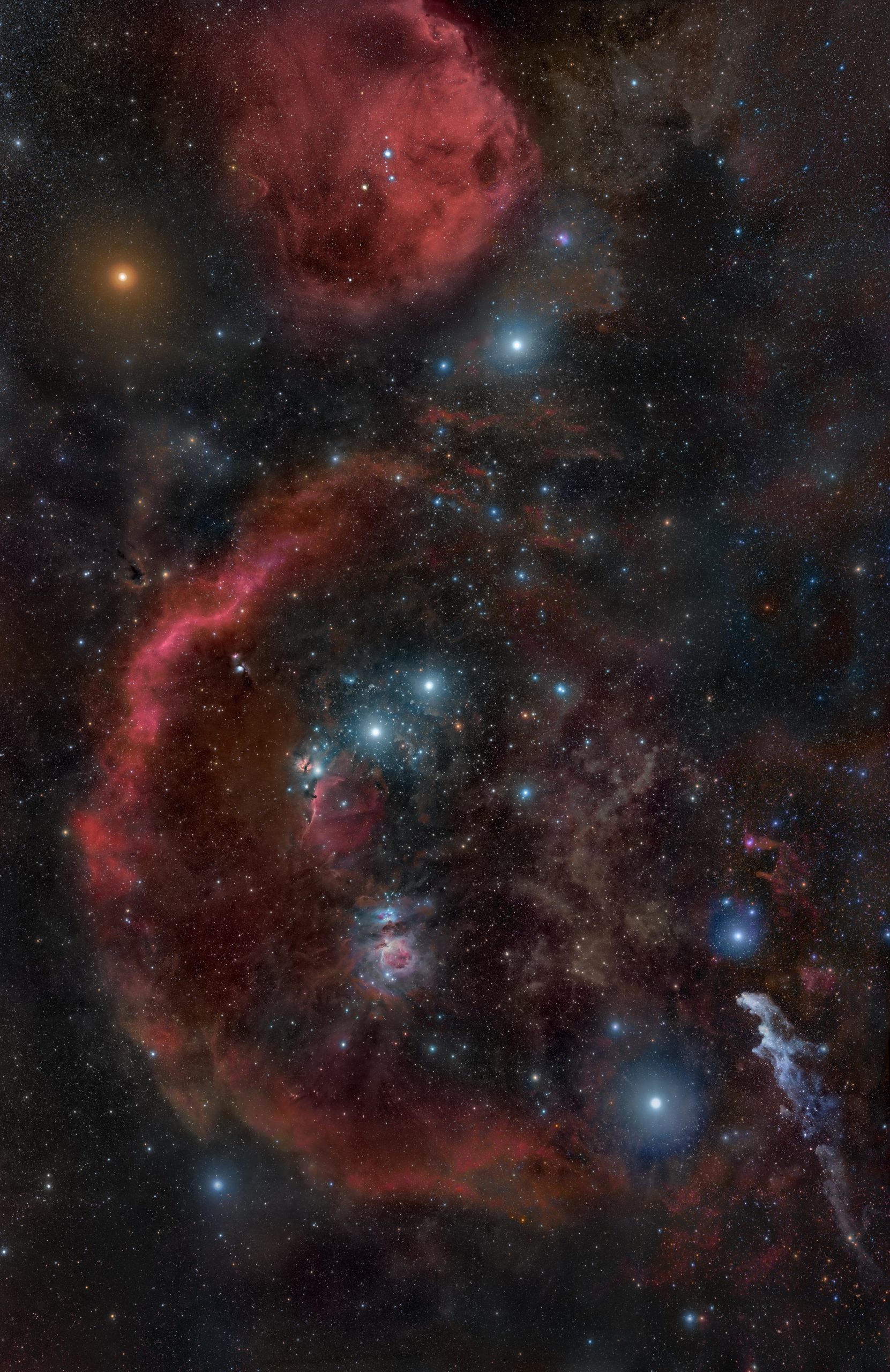 Orion Molecular Cloud || Giant Molecular Clouds
Orion Molecular Cloud || Giant Molecular Clouds
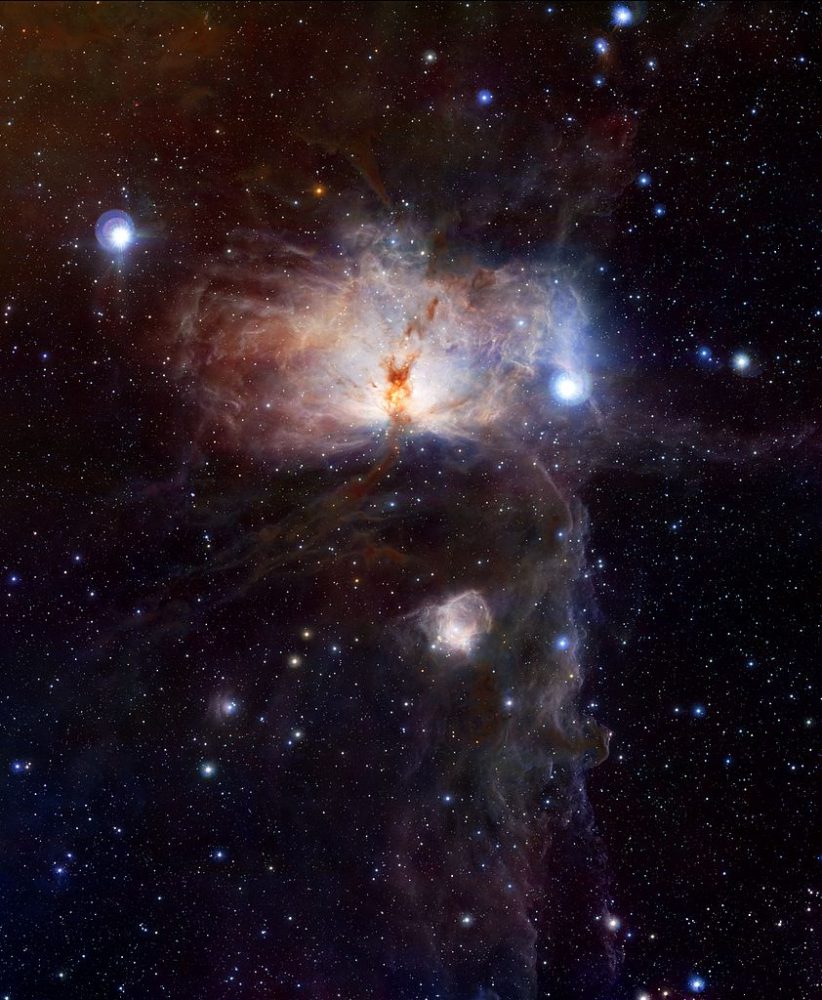 Flame Nebula or NGC 2024 || Emission Nebula
Flame Nebula or NGC 2024 || Emission Nebula


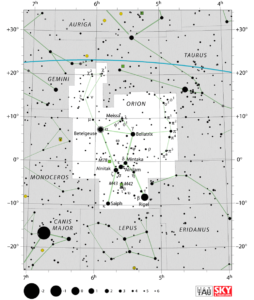 will see another constellation named Monoceros and Gemini. In the North and South of Orion, you will find Taurus and Lepus constellations respectively. Orion is halfway above and halfway below celestial equator.
will see another constellation named Monoceros and Gemini. In the North and South of Orion, you will find Taurus and Lepus constellations respectively. Orion is halfway above and halfway below celestial equator.